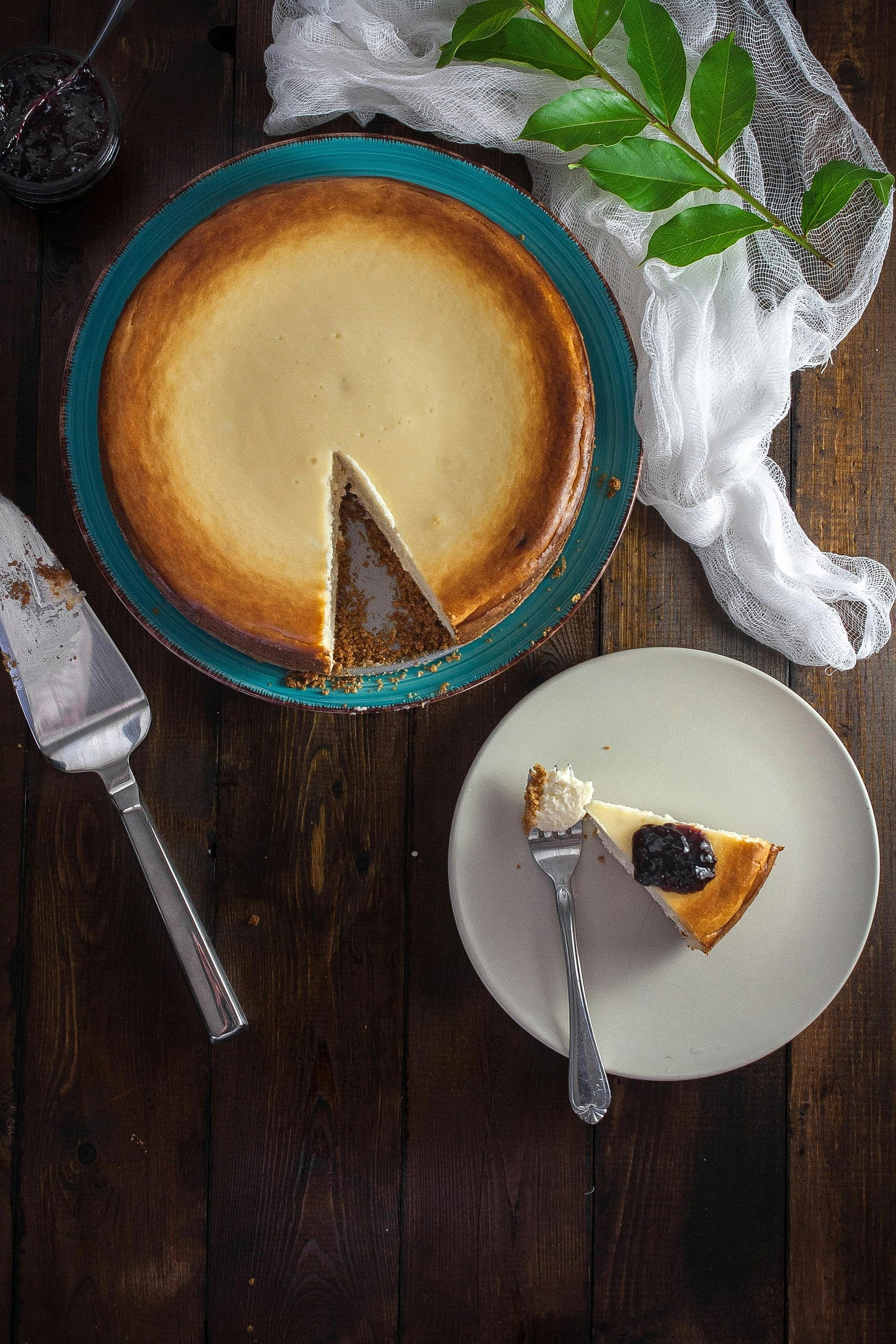The World's Best Cheesecakes: From New York to Japan
Creamy, jiggly, burnt, or fluffy, cheesecake wears a lot of hats. And each iconic version has its own story, style, and science. Whether you're team dense-and-decadent or all about the soufflé bounce, this week we’re breaking down the big three: New York, Basque, and Japanese.
Let’s dive into what makes each one unique, and how science helps each slice shine.
🍰 The New York-Style Cheesecake
A Brief History:
This classic got its start in the 1920s, thanks to Arnold Reuben, owner of the Turf Restaurant in NYC. After tasting a creamy cheese pie at a private event, he set out to create his own version, swapping out the cottage cheese used at the time for cream cheese. It resulted in the rich, indulgent cheesecake we know today.
The Science:
New York cheesecake is all about the custard structure. It relies on a high ratio of cream cheese to eggs and very little added liquid. Cream cheese is a stabilized dairy emulsion, it holds together beautifully even in the presence of acidic ingredients like sour cream, giving it that ultra-smooth texture.
Eggs: The proteins help form a gel as they cook, thickening the batter without curdling.
Sugar: Raises the temperature at which eggs coagulate, giving you time to bake it slowly and evenly.
Sour Cream: Adds moisture and tang without thinning the structure.
Low, slow bake + water bath: Prevents curdling and cracking. The water bath keeps the temperature steady while the eggs gently set.
Texture Profile:
Dense, rich, silky, and indulgent—with a slightly tangy finish.
🔥 The Basque Cheesecake
A Brief History:
Born at La Viña restaurant in San Sebastián, Spain, this crustless cheesecake gained cult status thanks to its high-temp bake, burnt top, and custardy center. It breaks almost every cheesecake rule, and that’s what makes it amazing.
The Science:
Basque cheesecake has more eggs and cream than its New York cousin, and skips sour cream altogether. The batter is thinner and more liquid. That means a looser gel structure, resulting in a more custard-like texture.
High-heat bake (no water bath): Promotes the Maillard reaction and caramelization, giving the top its signature deep color and toasty flavor.
Cream instead of sour cream: More fat, more richness, less structure.
No crust, no chill: This one is meant to be rustic and oozy.
Texture Profile:
Flan-like center, deeply caramelized top, complex and custardy with a melt-in-your-mouth finish.
🍥 The Japanese “Soufflé” Cheesecake
A Brief History:
Light, jiggly, and airy, this cheesecake became popular in Japan in the 1970s and hit global fame with the rise of Rikuro Ojisan’s shop in Osaka. It blends French technique with Japanese minimalism and a whole lot of whisking.
The Science:
Japanese cheesecake is basically a hybrid of a sponge cake and a custard. It starts with a stirred custard base (cream cheese + yolks) cooked gently over a double boiler, and gets its lift from a whipped meringue folded in at the end.
Egg separation + meringue: Whipped egg whites trap air and lighten the batter.
Double boiler: Prevents the yolks and cream cheese from cooking too quickly.
Water bath bake: Just like with New York cheesecake, this ensures slow, even cooking and prevents cracks or collapse.
Bonus Foam Science:
Meringue structure depends on when you add sugar. Add it too early, and the bubbles stay small and tight. Add it once the egg whites have already foamed, and you get a more stable structure—perfect for this delicate cake.
Texture Profile:
Light, jiggly, and airy. Somewhere between angel food cake and cheesecake. Less sweet, super fluffy, with a subtle tang.
Want to learn more? Have a questions? Reply and let me know—I always love talking about the science behind baking.
Stay Sweet,
Sarah @HalfBatchBaking



